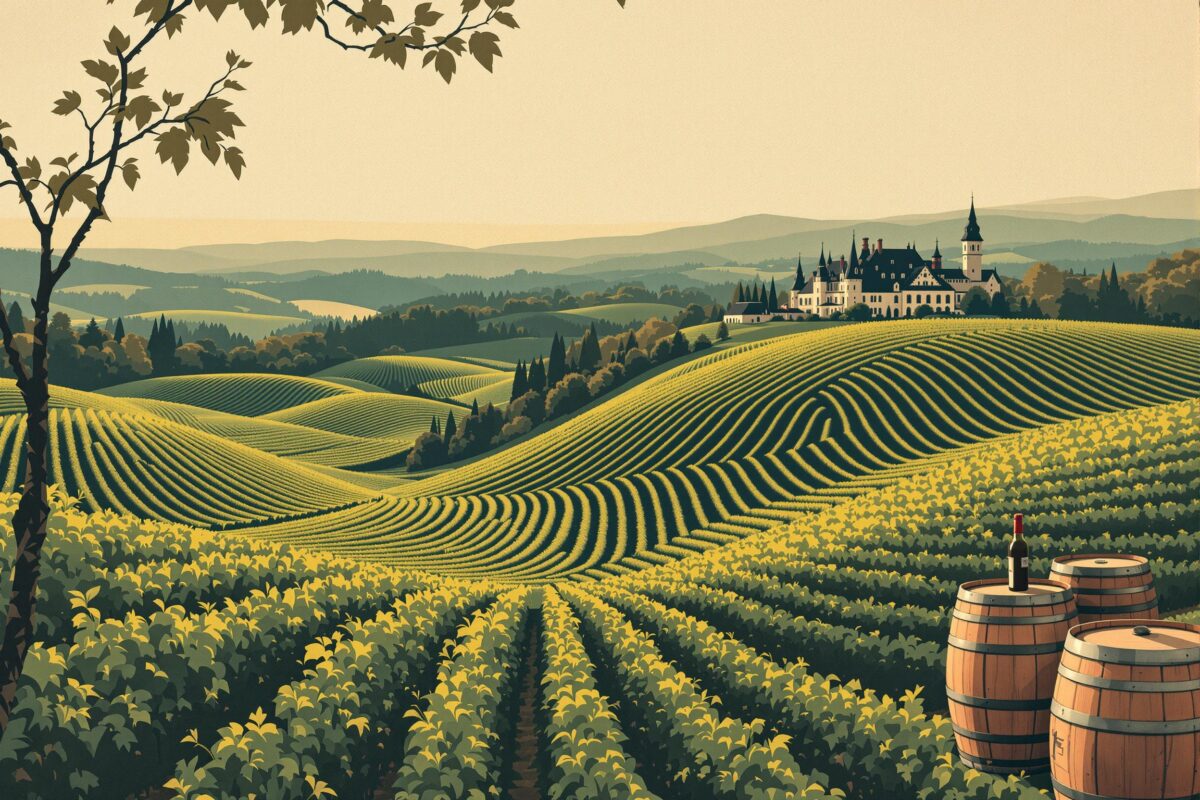Château Margaux: Exploring the Legacy of a Premier Grand Cru Classé
Château Margaux stands as an icon of excellence in Bordeaux, a Premier Grand Cru Classé estate shaping the world of fine wine. Nestled in the Margaux appellation, this prestigious French winery crafts exceptional red wines, predominantly from Cabernet Sauvignon and Merlot. The name itself whispers unparalleled quality and enduring elegance, intrinsically linked to the esteemed 1855 Classification. Let’s delve into the history, techniques, and allure of Château Margaux, revealing not just a winery, but a cornerstone of Bordeaux wine culture—a benchmark for red wines worldwide.
Trend Analysis: The Evolution of Bordeaux Wines and Modern Margaux Influences
Bordeaux wines are in constant flux, influenced by historical reverence and cutting-edge practices. Premium Bordeaux, especially from appellations like Margaux, lead this evolution. Château Margaux, a Premier Grand Cru Classé, embodies this dynamic interplay. Modern Bordeaux winemaking emphasizes terroir, sustainable vineyard management, and meticulous grape selection. Château Margaux gracefully balances these trends, honoring tradition while embracing advancements in viticulture and vinification. Its influence sets quality benchmarks, inspiring winemakers throughout Bordeaux and beyond. Consumer preferences lean toward elegance, complexity, and ageing potential—hallmarks of Margaux wines—solidifying Château Margaux’s global influence on premium red wines. The estate’s pursuit of excellence ensures continued relevance in the dynamic fine wine world. Furthermore, the collectible wine market’s growth positions Château Margaux among the most sought-after investment-grade bottles, underscoring the lasting legacy and financial value of Premier Grand Cru Classé Bordeaux wines.
In-Depth Issue Breakdown: The Role of the 1855 Classification in Today’s Wine Market
The 1855 Bordeaux Classification remains influential yet debated. Created for the Paris Exposition, it categorized Médoc and Sauternes wines by price and reputation. Château Margaux earned its Premier Grand Cru Classé status, the highest tier. But its 21st-century relevance sparks discussion. Critics argue its outdated nature overlooks changes in vineyard ownership, winemaking, and terroir expression over time, and neglects other prestigious appellations like Pomerol and Saint-Émilion. Yet, it holds immense marketing power. Globally, Premier Grand Cru Classé signifies exceptional quality, offering Château Margaux brand recognition and influencing price and demand. It shapes consumer expectations for quality, complexity, and ageing potential, which Château Margaux consistently surpasses. This classification underscores the tension between legacy and current wine world realities. While some advocate for revision, its impact on consumer perception and market dynamics is undeniable, especially for estates like Château Margaux, a cornerstone of this historical hierarchy. It acts as both guide and constraint, shaping the narrative and expectations surrounding Bordeaux’s most prestigious wines. Château Margaux’s identity and market position are inextricably tied to this classification’s legacy.
Innovative Solutions: Modern Techniques and Blending Approaches by Château Margaux
Château Margaux seamlessly blends tradition with innovation in viticulture and winemaking. Modern techniques enhance wine quality and express the Margaux terroir’s uniqueness. Precision viticulture, using advanced technologies, monitors vineyard conditions, optimizes irrigation, and tailors treatments to specific vineyard blocks, ensuring sustainable and efficient management for superior grapes. In the winery, cutting-edge equipment complements traditional methods, from gentle grape handling and temperature-controlled fermentation to meticulous barrel ageing. Château Margaux’s blending approach is pivotal. Rigorous selection ensures only the finest lots make it into the Grand Vin. The Cabernet Sauvignon-dominant blend is carefully crafted for balance, complexity, and longevity. Innovation extends to sustainability, minimizing environmental impact and promoting biodiversity through environmentally responsible practices. This holistic approach, uniting tradition, innovation, and sustainability, keeps Château Margaux at Bordeaux’s forefront. The continuous pursuit of excellence through innovation defines Château Margaux’s crafting of exceptional Margaux wine, positioning it for continued success while honoring its rich legacy.
Visual Comparisons: Infographics on Ageing Potential and Wine Blend Composition
Visuals effectively communicate key aspects of Château Margaux. Infographics simplify complex data, boosting understanding and engagement. Imagine an infographic showcasing Château Margaux’s ageing potential across vintages—a timeline depicting how vintages evolve, highlighting peak drinking windows and overall longevity, emphasizing the ageing capacity of Premier Grand Cru Classé Margaux. Another infographic could detail the typical blend composition using a pie chart or stacked bar graph to represent Cabernet Sauvignon, Merlot, Petit Verdot, and Cabernet Franc proportions. Comparing blend compositions across vintages reveals vintage variation and winemaking strategies. Comparing Château Margaux with other Premier Grand Cru Classé estates highlights stylistic differences. Visual aids enhance wine information accessibility, making complex topics engaging. Incorporating infographics on TourDeWine’s product pages enriches user experience, providing valuable insights.
Practical Tips: Expert Advice on Savoring, Storing, and Pairing Margaux Wines
Savoring Margaux wines is an experience best optimized with the right knowledge. Proper storage is key: store bottles horizontally in a cool, dark, humid place (ideally around 55°F/13°C and 70% humidity), avoiding temperature fluctuations and direct sunlight. Serving temperature is crucial. Serve Château Margaux at 64-68°F (18-20°C) to unleash its aromas. Decanting, especially younger vintages, softens tannins; allow 1-2 hours. Use large Bordeaux glasses for aeration. Appreciate the wine’s appearance, aromas, and elegant complexity. Food pairings enhance the experience. Château Margaux complements roasted lamb, beef tenderloin, grilled steak, game meats, earthy flavors (mushrooms, truffles), and aged cheeses like Gruyère or Comté. Avoid overly spicy or acidic dishes. These tips help appreciate the exceptional quality of Château Margaux and other fine Margaux wines.
Conclusion: Embracing the Enduring Legacy of Château Margaux Premier Grand Cru Classé
Château Margaux epitomizes Bordeaux’s enduring legacy. From its historical significance in the 1855 Classification to modern innovations, it sets the standard for quality and elegance in red wine. The estate’s commitment to excellence—meticulous vineyard management, grape selection, masterful blending—ensures exceptional Margaux wine production. Its global reputation remains high, fueled by consistent quality, prestige, and ageing potential. Modern preferences for elegant red wine align perfectly with Château Margaux’s style. While debate surrounds the 1855 Classification, its market influence persists. Château Margaux’s innovative spirit, balancing tradition with modern techniques, ensures continued success. Explore the exceptional Château Margaux and other Premier Grand Cru Classé Bordeaux wines at TourDeWine. Discover the legacy, savor the elegance, and invest in the timeless appeal of Château Margaux—an icon of French wine and the pinnacle of red wine excellence.
